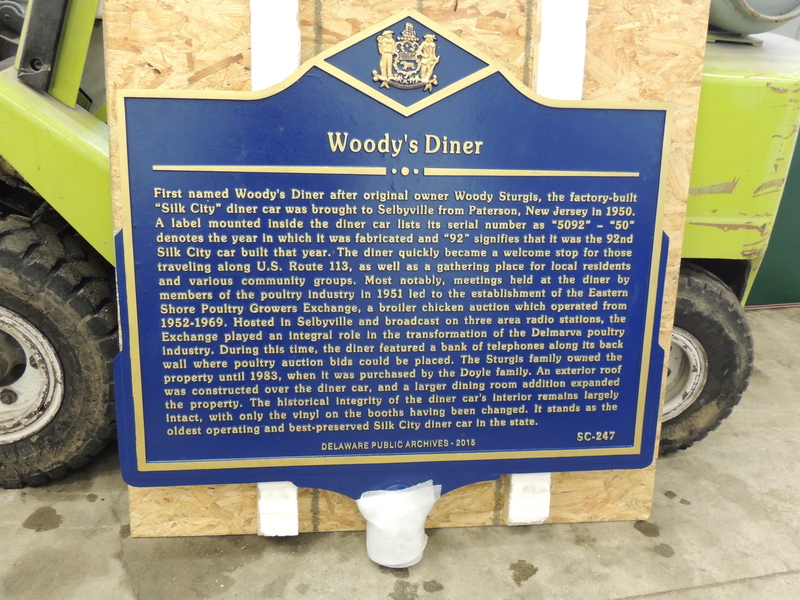The Delaware Public Archives Historic Marker Program has recognized Woody’s Diner in the building where Doyle's Restaurant exists today in Selbyville. The marker reads, "First named Woody’s Diner after original owner Woody Sturgis, the factory-built Silk City diner car was brought to Selbyville from Paterson, New Jersey in 1950.
A label mounted inside the diner car lists its serial number as '5092' - '50' denotes the year in which it was fabricated and '92' signifies that it was the 92nd Silk City car built that year. The diner quickly became a welcome stop for those traveling along U.S. Route 113, as well as a gathering place for local residents and various community groups.
"Most notably, meetings held at the diner by members of the poultry industry in 1951 led to the establishment of the Eastern Shore Poultry Growers Exchange, a broiler chicken auction which operated from 1952-1969. Hosted in Selbyville and broadcast on three area radio stations, the Exchange played an integral role in the transformation of the Delmarva poultry industry. During this time, the diner featured a bank of telephones along its back wall where poultry auction bids could be placed. The Sturgis family owned the property until 1983, when it was purchased by the Doyle family. An exterior roof was constructed over the diner car, and a larger dining room addition expanded the property. The historical integrity of the diner car’s interior remains largely intact, with only the vinyl on the booths having been changed. It remains the oldest operating and best-preserved Silk City diner car in the state."
Delaware's historical markers are one of the most popular programs at the Delaware Public Archives. While more than 550 sites throughout the First State have received historical markers since the program began in 1931, almost half of them have been installed since 1990. The popularity of this program can be attributed to the growing interest of Delawareans who want to show their pride and interest in Delaware's significant events, people, structures, and traditions.
Every new historical marker is the result of a direct request made to members of the General Assembly from interested individuals or organizations. This program is a collaboration of the State of Delaware and its citizens to mark the state's rich history for future generations.
The markers in each county were numbered sequentially as they were proposed, preceded by NC (New Castle), K (Kent) and S (Sussex) to note the county in which they were located. Most historical markers in Delaware are roadside markers, each representing some aspect of history related to notable Delawareans, buildings, places, or events. Of the more than 500 markers in Delaware, Sussex County has the most, with 41 percent of all markers in the state, followed by New Castle County with 37 percent and Kent County with 22 percent.























































